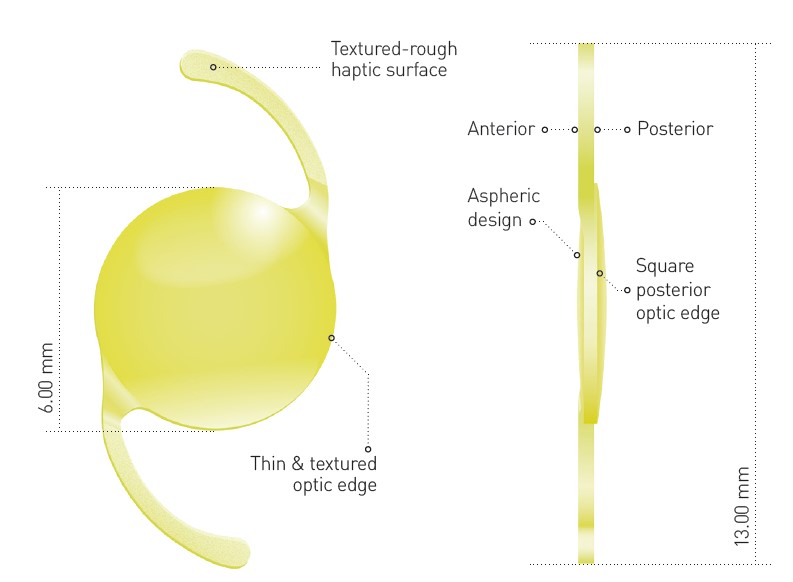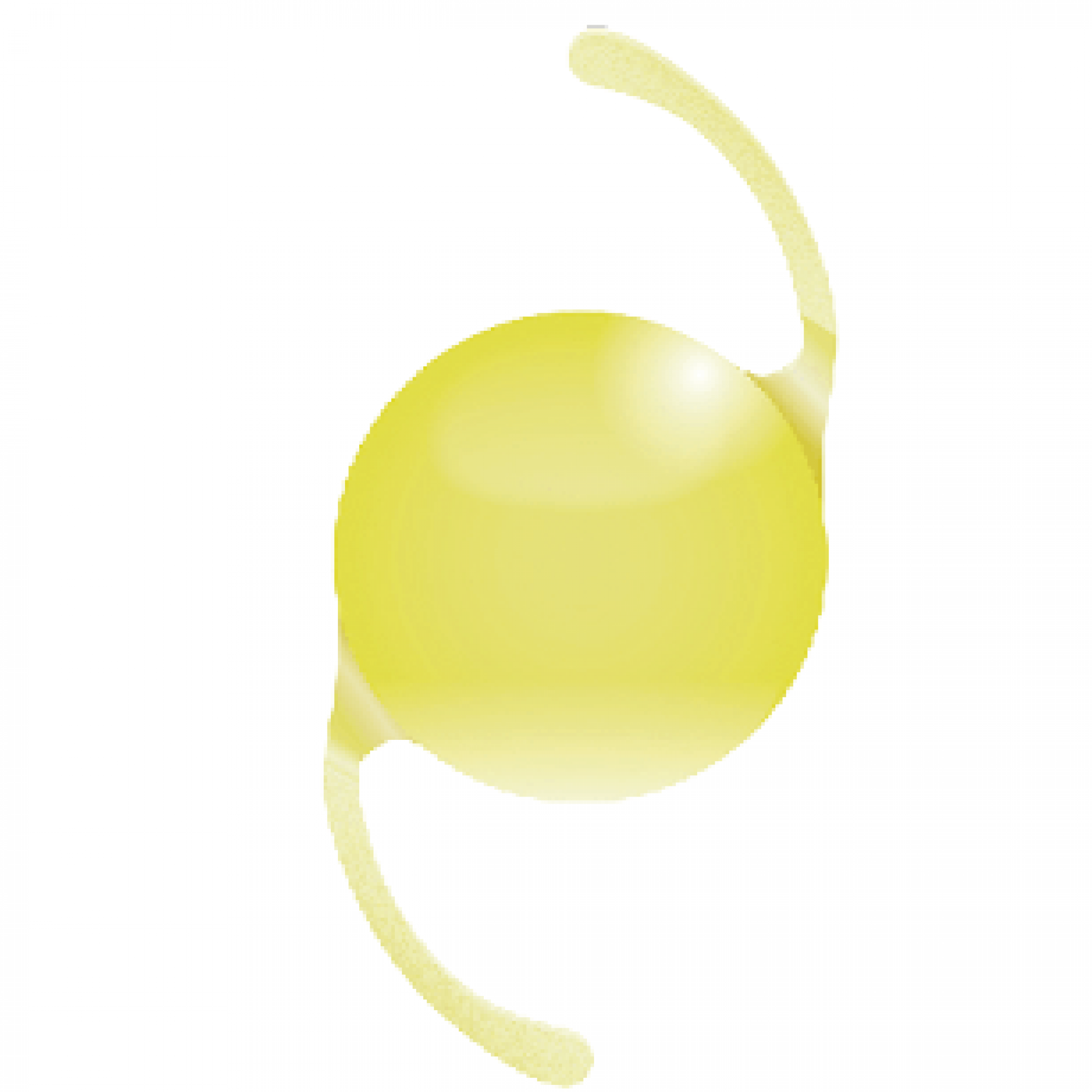Allgemein
Hauptmerkmale
- Erweiterte Tiefenschärfe zur Unterstützung des Intermediärbereichs (Enhanced Monofocal)
- Glisteningfreies hydrophobes Acrylat¹, ²
- Asphärische Optik für verbesserte Abbildungsqualität³
- Aussendurchmesser der vorderen Injektorspitze 1.70 mm
- Die texturierte Optikkante wurde konzipiert, um Dysphotopsien zu reduzieren
- Reduziertes PCO-Risiko (Posterior Capsular Opacification) durch scharfes Kantendesign und innovative Oberflächenbehandlung⁴, ⁵
- Texturiert raue Haptiken
- Langzeit-Transparenz basierend auf In-vitro-Tests
Die Vivinex™ bietet Kataraktpatienten eine herausragende optische Qualität und klare Sicht.6,7 2 Millionen verkaufte Linsen weltweit belegen das Vertrauen der Chirurgen in Vivinex. Die Vivinex™ von HOYA ist besonders in der Schweiz ein etabliertes Produkt für höchste Ansprüche: Seit der Markteinführung im Jahr 2015 wurden bereits mehr als 100 000 Vivinex™ IOL implantiert. Es gibt in der Schweiz also mehr «Vivinex-Patienten» als die Stadt Luzern Einwohner hat!
Gute Reproduzierbarkeit und optimierte Materialeigenschaften
Ein Kataraktexperte, der die Vivinex seit mehr als 5 Jahren regelmässig implantiert, ist Dr. Philippe Othenin-Girard aus Lausanne. Er ist zufrieden mit dem Implantat: «Neben der guten Reproduzierbarkeit des Implantationsprozesses, der es erlaubt, mit kleinen Inzisionen zu arbeiten, schätze ich folgende Eigenschaften: Das hydrophobe Material ohne Glistenings, zuverlässige Berechnungskonstanten und ein klarer und schnell zu bedienender torischer Kalkulator.» Weitere Erfahrungen aus erster Hand: ox-reports.ch

¹ HOYA data on file. DoF-CTM-21-002, HOYA Medical Singapore Pte. Ltd, 2021
² Glistening-free per Miyata scale; study result of the David J Apple International Laboratory for Ocular Pathology, University Hospital Heidelberg. Report on file.
³ Pérez-Merino P, Marcos S. Effect of intraocular lens decentration on image quality tested in a custom model eye. J Cataract Refract Surg. 2018;44(7):889-896.
⁴ Leydolt, C. et al. (2020): Posterior capsule opacification with two hydrophobic acrylic intraocular lenses: 3-year results of a randomized trial.
⁵ Matsushima, H. et al. (2006): Active oxygen processing for acrylic intraocular lenses to prevent posterior capsule opacification. In: Journal of cataract and refractive surgery 32 (6), p. 1035–1040. In: American journal of ophthalmology 217 (9), p. 224-231.
⁶ Leydolt, C. et al. (2020): Posterior capsule opacification with two hydrophobic acrylic intraocular lenses: 3-year results of a randomized trial. In: American journal of ophthalmology.
⁷ Pérez-Merino P, Marcos S. Effect of intraocular lens decentration on image quality tested in a custom model eye. J Cataract Refract Surg. 2018;44(7):889-896.
² Glistening-free per Miyata scale; study result of the David J Apple International Laboratory for Ocular Pathology, University Hospital Heidelberg. Report on file.
³ Pérez-Merino P, Marcos S. Effect of intraocular lens decentration on image quality tested in a custom model eye. J Cataract Refract Surg. 2018;44(7):889-896.
⁴ Leydolt, C. et al. (2020): Posterior capsule opacification with two hydrophobic acrylic intraocular lenses: 3-year results of a randomized trial.
⁵ Matsushima, H. et al. (2006): Active oxygen processing for acrylic intraocular lenses to prevent posterior capsule opacification. In: Journal of cataract and refractive surgery 32 (6), p. 1035–1040. In: American journal of ophthalmology 217 (9), p. 224-231.
⁶ Leydolt, C. et al. (2020): Posterior capsule opacification with two hydrophobic acrylic intraocular lenses: 3-year results of a randomized trial. In: American journal of ophthalmology.
⁷ Pérez-Merino P, Marcos S. Effect of intraocular lens decentration on image quality tested in a custom model eye. J Cataract Refract Surg. 2018;44(7):889-896.

